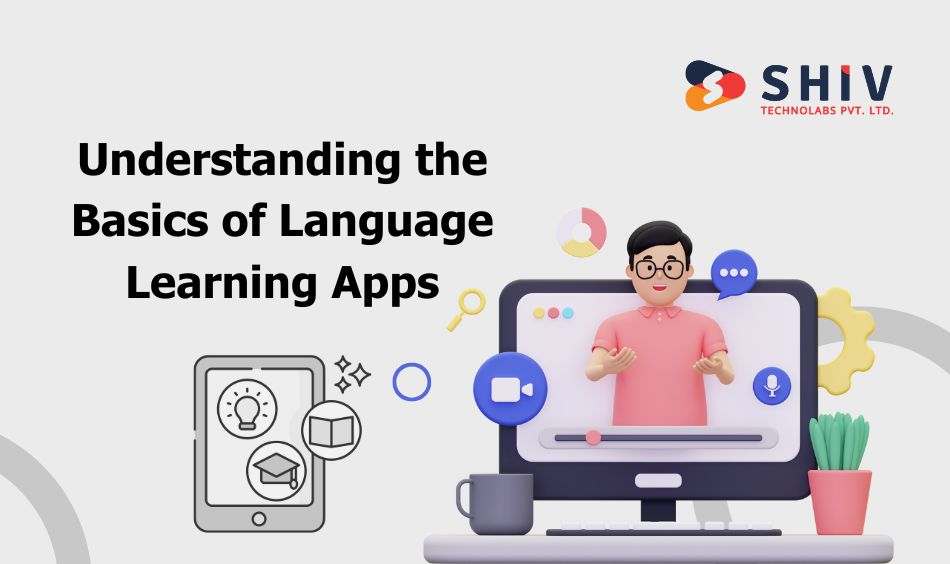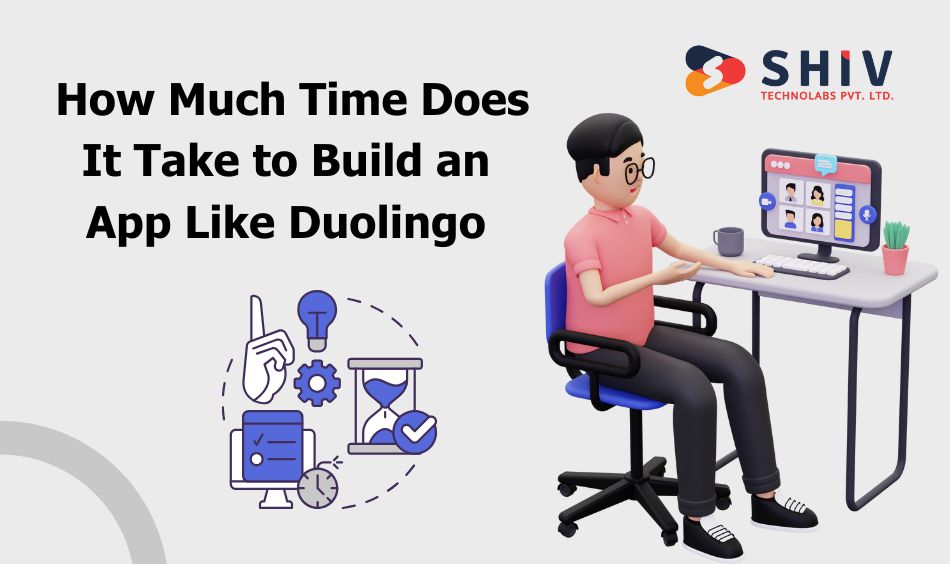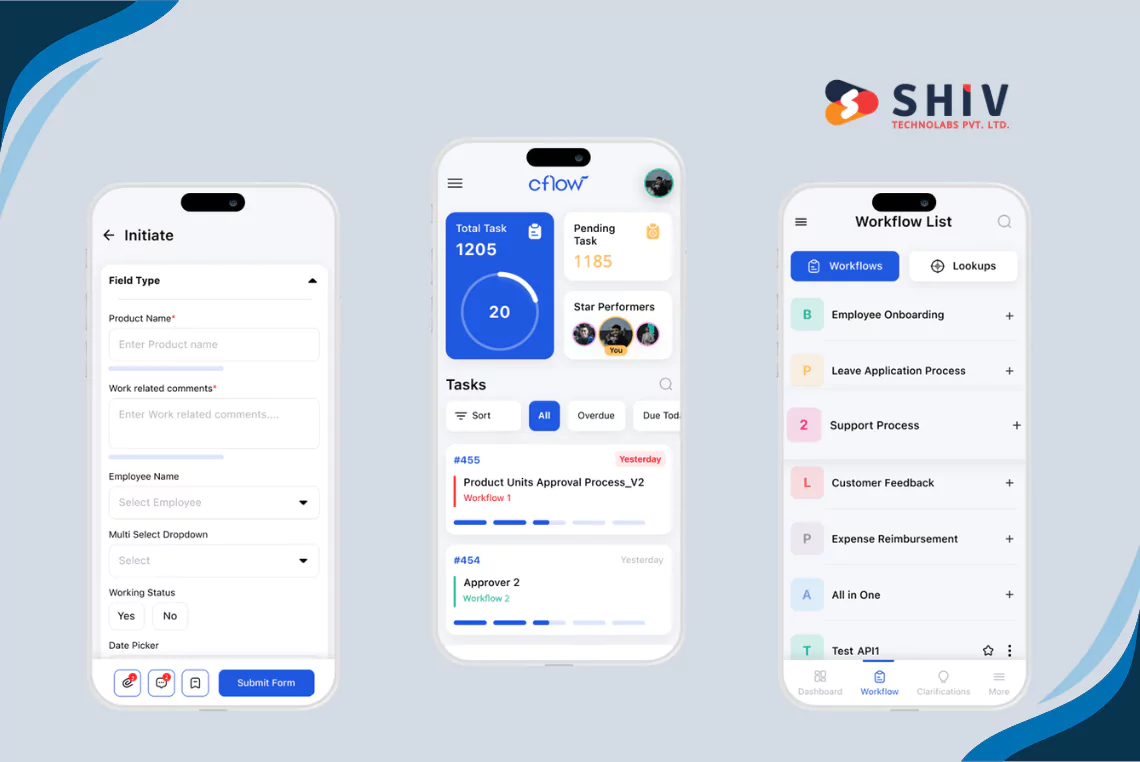Table of Contents
Creating a language learning app like Duolingo requires a well-thought-out plan and attention to user experience, design, and content. It’s important to make learning engaging, interactive, and accessible. Below are eight simple steps to help you build a successful language learning app.
Understanding the Basics of Language Learning Apps

Language learning apps, like Duolingo, aim to make learning a new language interactive and accessible. They incorporate features like gamification, personalized lessons, and progress tracking to keep users motivated. Building such an app requires a focus on both educational value and user engagement to create a seamless learning experience.
1. Identify Core Features
First, define the key features your app will offer. Duolingo stands out with features like gamified lessons, leaderboards, daily streaks, and spaced repetition. Consider incorporating:
- User profiles for tracking progress.
- Lesson modules that progress from beginner to advanced.
- Achievements to motivate users.
- Push notifications to encourage regular practice.
2. Design an Intuitive UI/UX
The app should be easy to use and visually appealing. Focus on simple navigation, clean layouts, and responsive design. A user-friendly interface will allow learners to focus on language without distractions. Make sure to:
- Choose appropriate colors that make learning pleasant.
- Use fonts that are easy to read.
- Keep the navigation logical for first-time users.
3. Select Learning Methods
Duolingo employs methods like vocabulary quizzes, grammar exercises, and conversational practice. Decide on the techniques your app will use:
- Spaced repetition to help users remember new words.
- Interactive quizzes to test knowledge.
- Speaking exercises to practice pronunciation.
- Cultural notes to offer context beyond words.
4. Incorporate Gamification
Gamification is crucial to keeping learners engaged. Reward users for progress, consistency, and achievements. Implement:
- Badges and rewards for completing lessons
- Leaderboards to compare progress with friends or other users
- Daily goals that motivate users to practice consistently, making learning fun and boosting user retention
5. Develop Content for Multiple Languages
The heart of a language learning app is the content. Start by offering a few popular languages and expand over time. Work with native speakers and language experts to develop:
- Comprehensive vocabulary lists
- Grammar lessons tailored to each language
- Exercises that focus on listening, reading, writing, and speaking
Also Read:- How Much Does It Cost to Develop a Real Estate App?
6. Add Voice Recognition
Speaking practice is key to language learning. Voice recognition technology allows users to practice pronunciation and get instant feedback. Use a reliable API to ensure:
- Accurate recognition of various accents
- Feedback that helps improve speaking skills, differentiating your app and offering more value to users
7. Test and Launch an MVP
Before full-scale development, launch a Minimum Viable Product (MVP). This version of the app should include basic features and language lessons. Collect feedback from early users and improve the app based on their insights. Testing allows you to:
- Fix bugs and technical issues
- Refine lesson difficulty and pacing
- Add or adjust features that improve learning outcomes
Use the Latest TechStack
| Development Type | iOS App Development | Android App Development |
|---|---|---|
| Design | Storyboard, XIB, SwiftUI | XML |
| Programming Language | Swift, Objective-C | Java, Kotlin |
| Toolkit | Xcode, iOS SDK | Android Studio, Android SDK |
| Dependency Management | Cocoapods, Swift Package Manager | – |
| Database | CoreData, SQLite | SQLite, Realm |
# 8. Offer a Subscription Model
To monetize the app, consider offering both free and premium versions. The free version can include basic lessons, while premium users get access to advanced features like:
- Offline learning
- Additional language packs
- Ad-free experience, which helps retain users while generating revenue
How Much Does It Cost to Develop a Language Learning App Like Duolingo
Developing a language learning app involves multiple cost factors, including design, development, and maintenance. The final price depends on features, complexity, team size, and development region. Let’s examine the primary elements that impact the cost of building an app similar to Duolingo.
# App Features
The more complex and feature-rich the app, the higher the development cost. Simple apps with basic learning modules are more affordable, while advanced apps with gamification, voice recognition, and interactive elements will require a bigger budget.
# Platform Choice
Developing the app for a single platform (iOS or Android) is less costly than building for both. Cross-platform solutions may offer a compromise, though native apps tend to perform better.
# Development Team
Whether you hire an in-house team, outsource to a development agency, or work with freelancers will influence the overall cost. Outsourcing to countries with lower hourly rates can significantly reduce expenses.
# Design and UI/UX
An intuitive and aesthetically pleasing user interface is crucial for user engagement. The design process includes creating wireframes, prototypes, and final visuals, which may add to the cost depending on complexity.
# Maintenance and Updates
Post-launch maintenance, bug fixes, and feature updates are an ongoing investment that should be considered when calculating total costs.
# Breakdown of Costs
Development Costs by Feature
| Feature | Estimated Cost | Time (Hours) |
|---|---|---|
| Basic User Profile | $2,000 – $5,000 | 40 – 80 |
| Gamification (badges, rewards) | $5,000 – $10,000 | 80 – 120 |
| Multi-language Support | $5,000 – $12,000 | 80 – 150 |
| Voice Recognition API | $8,000 – $15,000 | 120 – 180 |
| Interactive Lessons | $10,000 – $20,000 | 150 – 250 |
| Push Notifications | $1,000 – $3,000 | 20 – 40 |
| Leaderboards | $2,000 – $5,000 | 40 – 80 |
This table covers individual feature costs. Adding advanced features such as gamification and voice recognition will require higher investment but can improve user engagement.
Cost by Platform
| Platform | Estimated Cost | Time (Hours) |
|---|---|---|
| iOS Only | $30,000 – $50,000 | 500 – 800 |
| Android Only | $30,000 – $50,000 | 500 – 800 |
| Both iOS and Android | $60,000 – $100,000 | 1,000 – 1,500 |
| Cross-Platform (React Native, Flutter) | $40,000 – $80,000 | 700 – 1,000 |
Choosing a platform is a major decision. Native development for iOS and Android costs more but ensures optimal performance. Cross-platform solutions can help reduce costs but might involve trade-offs in app quality and performance.
Development Rates by Region
| Region | Hourly Rate (USD) | Average Cost (For Full App) |
|---|---|---|
| North America (US, Canada) | $100 – $150/hour | $100,000 – $200,000 |
| Western Europe | $80 – $120/hour | $80,000 – $180,000 |
| Eastern Europe | $30 – $60/hour | $40,000 – $100,000 |
| Asia (India, China) | $20 – $50/hour | $30,000 – $80,000 |
Where you hire your development team plays a big role in determining the cost. Developers in North America and Western Europe charge more, while those in Eastern Europe and Asia offer competitive rates.
How Much Time Does It Take to Build an App Like Duolingo

Building an app like Duolingo or Babble is a significant project that involves various stages, from initial planning to final launch. The development time largely depends on the app’s complexity, features, and the development team’s expertise. Below, we break down the typical phases and the time it takes to develop such an app.
Factors Affecting Development Time
- Features and Complexity The more complex and feature-rich the app is, the more time it takes to build. Duolingo and Babble include interactive lessons, progress tracking, gamification, and voice recognition, all of which add to development time.
- Platform Developing for a single platform (iOS or Android) is faster than building for both. Cross-platform development can reduce time but might still take longer than single-platform development due to testing and optimization.
- Team Size and Expertise A larger team with experience in app development can work on multiple aspects simultaneously, reducing overall time. However, smaller teams or less experienced developers may require more time to complete tasks.
- Third-Party Integrations Using APIs for features like voice recognition, speech-to-text, or gamification can speed up development but still require time for proper integration and testing.
# Development Phases and Time Estimates
1. Planning and Research (60 – 100 Hours)
This phase involves market research, feature definition, and user journey mapping. Planning lays the groundwork for development, ensuring all requirements are clearly understood.
2. UI/UX Design (120 – 180 Hours)
Designing the user interface and user experience for a language learning app is critical. This stage includes wireframing, prototyping, and finalizing the design to ensure the app is user-friendly and visually appealing.
3. Development (700 – 1,000 Hours)
The development stage is where the bulk of the work happens. This includes front-end and back-end development, creating user accounts, lesson modules, gamification elements, and more.
4. Testing (150 – 250 Hours)
Thorough testing is necessary to ensure the app runs smoothly across devices and platforms. This phase involves both manual and automated testing to identify and resolve any bugs or issues.
5. Launch and Post-Launch Support (80 – 120 Hours)
After development and testing, the app is launched on app stores. Post-launch support includes fixing bugs that may arise and providing necessary updates to improve user experience.
# Time Estimate for Building an App Like Duolingo or Babble
| Tasks/Features | Approx. Hours |
|---|---|
| Planning & Research | 60 – 100 |
| UI/UX Design | 120 – 180 |
| User Profiles & Registration | 50 – 80 |
| Lesson Module Development | 150 – 250 |
| Gamification Features (Badges, Rewards) | 80 – 150 |
| Voice Recognition Integration | 120 – 180 |
| Push Notifications | 20 – 40 |
| Leaderboard & Social Sharing | 50 – 80 |
| Multi-language Support | 80 – 120 |
| Testing & QA | 150 – 250 |
| Launch and Post-Launch Support | 80 – 120 |
Conclusion
Building a language learning app like Duolingo or Babble requires careful planning, a focus on user experience, and the inclusion of engaging features. The development timeline and cost will vary depending on the complexity, chosen platform, and development team. It’s essential to break down the process into clear stages—from research and design to development and post-launch support—ensuring that every aspect of the app meets user needs and market standards.
Partnering with the right team is key to achieving success. Shiv Technolabs, a leading mobile app development company in the USA, offers comprehensive solutions tailored to your project’s unique requirements. With our best app development services in USA, we ensure a smooth process from concept to completion, delivering an app that stands out in the competitive language learning space.
Investing in high-quality development will help you create a product that not only enhances user engagement but also provides long-term growth opportunities for your business. Reach out to Shiv Technolabs today to turn your app idea into reality.
FAQ
1. How much does it cost to develop a language learning app?
The cost of developing a language learning app can range from $40,000 to $200,000 or more, depending on the features, platform, development region, and complexity of the app. Advanced features like gamification and voice recognition will add to the overall budget.
2. How long does it take to build a language learning app like Duolingo?
It typically takes between 1,000 to 2,000 hours or more to develop a fully functional language learning app. This timeline includes planning, design, development, testing, and post-launch support.
3. What are the essential features of a language learning app?
Key features include:
- User profiles and progress tracking
- Interactive lessons
- Multi-language support
- Gamification (badges, rewards)
- Voice recognition for pronunciation
- Push notifications and daily reminders
- Leaderboards for social engagement
4. Should I develop my language learning app for iOS, Android, or both?
The platform choice depends on your target audience and budget. Developing for both iOS and Android will increase reach but also the cost and development time. Cross-platform solutions, like React Native or Flutter, offer a balance by allowing simultaneous development for both platforms.
5. What is the role of gamification in language learning apps?
Gamification plays a key role in keeping users engaged and motivated. By incorporating elements like badges, rewards, and daily streaks, users are more likely to return to the app and complete lessons, which improves retention rates and user satisfaction.
6. How can I monetize a language learning app?
You can monetize your app through several methods, including:
- Freemium model (free basic version with paid premium features)
- Subscription plans
- In-app purchases for additional lessons or language packs
- Ads (with an option to remove ads via paid subscription)
7. Why should I choose Shiv Technolabs to develop my language learning app?
Shiv Technolabs is a top mobile app development company in the USA, known for providing the best app development services. We offer expertise in building robust, scalable, and user-friendly apps tailored to your specific needs, ensuring a high-quality product that stands out in the market.


















